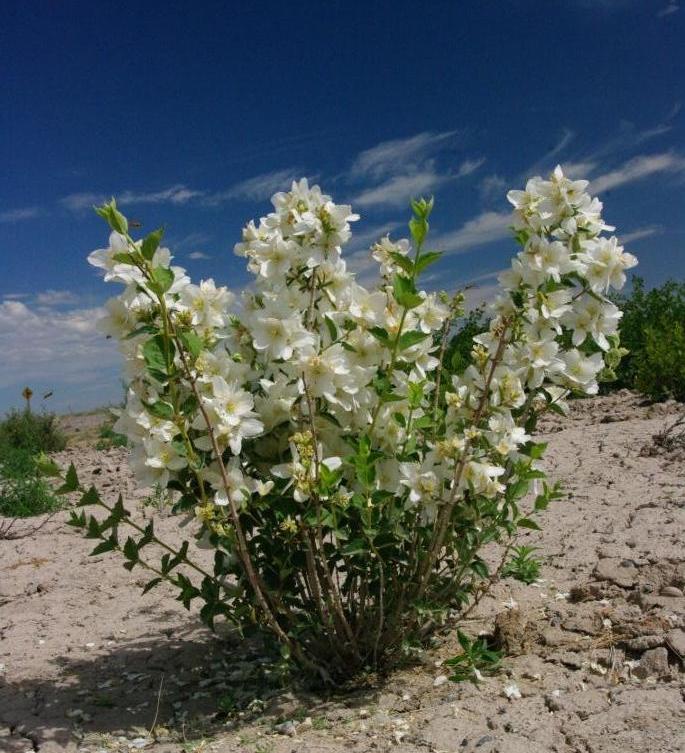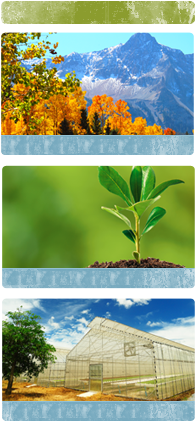Western Syringa in the Landscape

Stephen Love, University of Idaho
Scientfic Name: Philadelphus lewisiiCommon Name: Western Syringa, Lewis Mock Orange
Description: Western syringa or mock orange is one of the outstanding native plants of western North America. It is the local version of the European mock orange that is cultivated worldwide. The name “mock orange” is derived from the characteristic “orange-blossom” fragrance that permeates a wide swath of real estate around blooming plants. Western syringa is a deciduous shrub that grows to a height of 10 feet. The plants tend to grow upright and without maintenance can become leggy. The large, four-petaled, fragrant, white flowers are the attraction for this species. Bloom usually occurs in late May or June. The foliage is somewhat plain, making the plant somewhat common (although not ugly) in their post-bloom phase.
Native Habitat: Syringa is native to Idaho (where it is the state flower), Montana, and the Pacific states. Grows in a range of habitats, from riparian to dry wooded or brushy slopes. Elevation range is from sea level to 6,500 feet.
Cultural Requirement
Soil: Tolerates most soil types if well-drained. Some ecotypes are only marginally adapted to high pH soils, although others are very tolerant.
Moisture Tolerance: Moderately drought tolerant, but requires some moisture during the summer months to remain attractive. Stressed plants show symptoms consisting of curled and folded leaves.
Sun/Shade/Preference: Thrives in either full sun or part-shade.
Transplanting: Easy to transplant with high rates of survival both from pot to pot and from pot to garden. Plants develop fairly rapidly, tolerate pot culture, and if pruned, maintain acceptable appearance in pots up to 5-gallon size.
Propagation: Easily propagated from seed. Seeds require cold-moist stratification. Written sources indicate at least 8 weeks of cold stratification is needed, but in my experience, 4 to 6 weeks is plenty of time. Prevent seedling damping off by providing air movement around the seedlings, avoiding over-crowding, and avoiding over-watering. Syringa is easy to propagate vegetatively using summer softwood cuttings, treated with rooting hormones, and exposed to bottom heat. This allows for vegetative propagation of superior types.
Maintenance (pruning, fertilization, deadheading, division, irrigation, etc): Routine summer pruning is required to remove aging interior branches, remove spent flower clusters, control size, and improve form. Non-pruned plants tend to get leggy. Avoid spring pruning to preserve full bloom potential. Infrequent, but deep irrigation is required to keep plants healthy and attractive. Small amounts of nitrogen fertilizer added in the spring or fall will keep plants vigorous and help produce copious blooms.
Insect, disease, or other problems: Western syringa has no significant insect or disease pests.
Landscape Value
Use in the Landscape: Western syringa makes a great addition to a backyard woodland. It can be effective as a screen or used to complement small or large trees. Syringa can be used as a specimen or accent plant in a bed or border, where it should be planted close to common living areas where the fragrance can be enjoyed. This species contributes best to naturalized, less formal areas of the landscape.
Weediness/Invasive Potential: Western syringa plants are non-rhizomatous. Volunteer seedling production is very limited. This species does not exhibit invasive behavior.
Foliage: The foliage is deciduous. Leaves are medium-sized, almost triangular in shape, arranged opposite along the stems, and medium green in color. The leaves are often folded or rolled inward, especially under dry conditions. The branches are stiffly upright and almost unbranched when young, and become more branched with age. Young stems do not produce flowers.
Flower: Flowers appear in early spring, usually May or early June. Bloom period is relative short, usually less than 3 weeks. Flowers are large, 2 inches in diameter, with four white petals. The flowers are strongly and pleasantly fragrant.
Timing: May-June
Fruit: The fruit is a dry, hard capsule, each containing numerous, small, elongated, flat, tan or yellow seeds.
Form: Upright to slightly spreading unless pruned to create a rounded crown.
Texture: Medium to coarse
Ultimate Size: Mature height is 8 to 12 feet. Mature width is 5 to 8 feet.
Rate of Growth: Western syringa plants grow rapidly from seed and may be 2 to 3 feet tall at the end of the first summer. The plants continue to increase in size but may take 3 to 4 years to produce first flower.
Suggested Plant Partners: Western syringa is effectively used to accent deciduous and evergreen trees and shrubs, such as Pinus monophylla, Quercus gambelii, Mahonia aquifolium, and Holodiscus dumosus. In a mixed border, good partners include Monarda fistulosa, Penstemon havardii, Lupinus sericeus, Aquilegia formosa, Aster oblongifolium, and Agastache rupestris.
Availability: Occasionally available as potted plants from local and mail-order native plant nurseries.
Cultivars: ‘Cheyenne’ is a drought tolerant cultivar with smaller flowers. The ‘Goose Creek’ cultivar has double flowers. ‘Blizzard’ is a west coast selection that requires more water and is very floriferous.
References:

